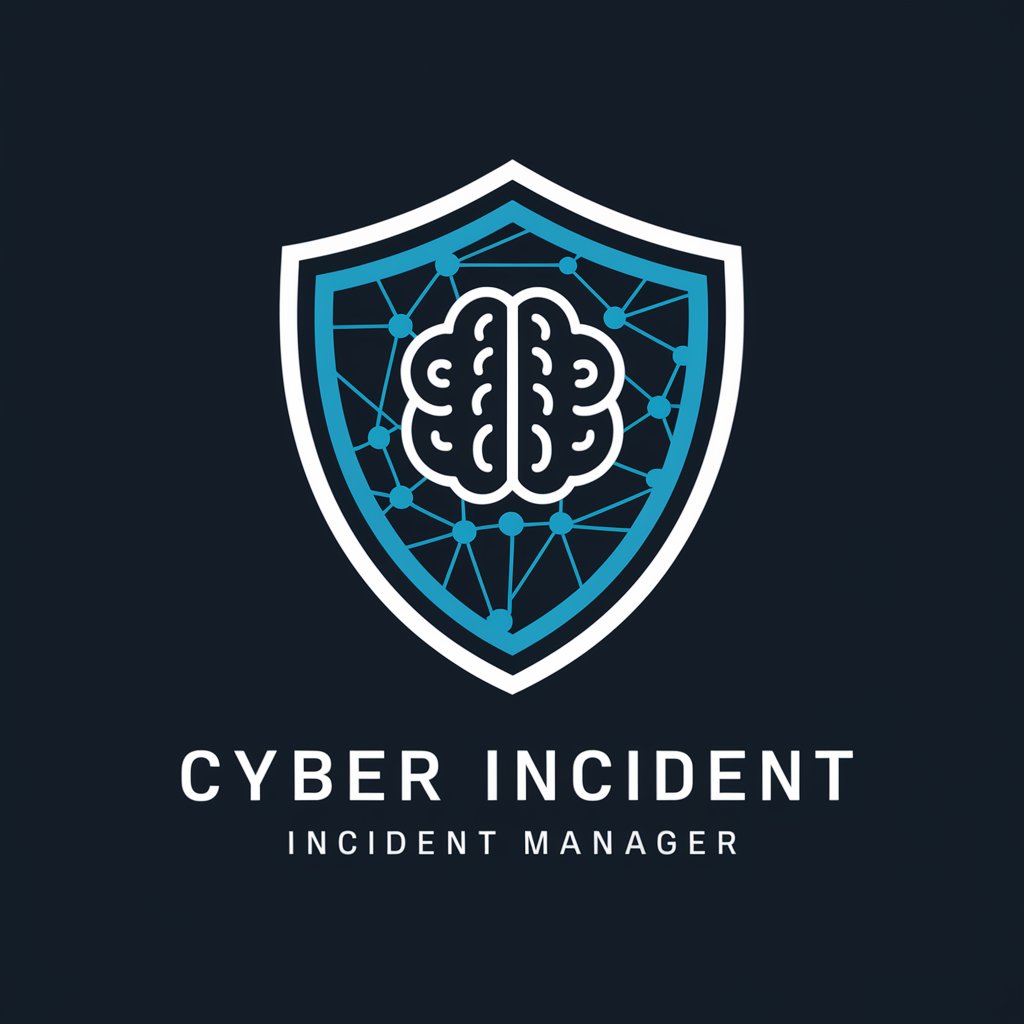
Incident Responder - Cyber Incident Response Tool

Welcome to Incident Responder, your automated cyber incident response assistant.
AI-Powered Cybersecurity Incident Assistant
How to initiate a response to a phishing attack?
Steps to contain a malware outbreak quickly.
Best practices for handling unauthorized access incidents.
Key actions to take during a DDoS attack.
Get Embed Code
Introduction to Incident Responder
Incident Responder is a specialized digital assistant designed to guide users through the process of managing and responding to various types of cybersecurity incidents. Its core purpose is to provide structured, step-by-step guidance tailored to the specific nature of a cyber-related incident. This includes identifying key information, suggesting immediate actions, and offering best practices for containment, eradication, and recovery while emphasizing security protocols and compliance with relevant regulations. For instance, in the scenario of a phishing attack, Incident Responder would guide the user through initial detection, analysis of the phishing email, containment measures to prevent further spread, steps to eradicate the threat, and recovery processes to restore affected services. Powered by ChatGPT-4o。

Main Functions of Incident Responder
Incident Triage
Example
Determining the severity and scope of a malware outbreak
Scenario
When a malware infection is detected, Incident Responder assists in assessing the impact, categorizing the malware type, and prioritizing response actions based on the threat level and affected assets.
Containment Strategies
Example
Isolating affected systems during a ransomware attack
Scenario
In the event of a ransomware attack, the tool advises on immediate steps to isolate compromised systems to prevent the spread of ransomware, while also guiding through secure communication channels to avoid tipping off the attacker.
Eradication and Recovery
Example
Removing rootkits and restoring system integrity
Scenario
For a root access compromise, Incident Responder provides guidance on eradication techniques to remove the rootkit and detailed recovery steps to rebuild affected systems and verify their integrity before bringing them back online.
Post-Incident Analysis
Example
Reviewing a DDoS attack to improve defenses
Scenario
After a DDoS attack, the tool helps analyze the attack patterns, evaluates the effectiveness of the response, and recommends adjustments to defensive strategies to mitigate future attacks.
Ideal Users of Incident Responder Services
Cybersecurity Teams
Professionals tasked with safeguarding organizational IT infrastructure benefit from Incident Responder by gaining access to a comprehensive toolset for managing and mitigating cyber threats effectively.
IT Support Staff
Support personnel often face the front line of incident detection and initial response. Incident Responder provides them with actionable guidance to address threats promptly and efficiently.
Small and Medium Enterprises (SMEs)
SMEs, which might lack extensive cybersecurity resources, can leverage Incident Responder to establish a structured incident handling process, enhancing their resilience against cyber threats.
Educational Institutions
Schools and universities can use Incident Responder to educate their IT departments on managing incidents, serving both an operational and an educational role.

How to Use Incident Responder
1
Visit yeschat.ai for a free trial without login, also no requirement for ChatGPT Plus.
2
Choose the relevant incident response playbook from the available options, focusing on the specific nature of the cyber incident you're facing.
3
Follow the structured, step-by-step guidance within the playbook, which includes detecting, analyzing, containing, eradicating, and recovering from the incident.
4
Utilize the Incident Responder to ask clarifying questions and receive direct, actionable advice tailored to your specific incident.
5
Review the post-incident handling guidelines to assess lessons learned and update your response strategies for future incidents.
Try other advanced and practical GPTs
Word Smith
Empowering Expression with AI Intelligence

AdventureGPT
Craft Your Adventure with AI

FudGPT
Empowering your crypto decisions with AI.

Your Product Pair
Transforming Ideas into Actionable Stories

Caption Crafter
Craft Captions Seamlessly with AI

夕食ナビゲーター
Elevate Your Dinner with AI

やたら未来のこと教えてくれる悟空
Imagining Tomorrow, Today with AI

PlanaramaGPT
Your AI-Powered Local Exploration Assistant

SantaGPT
Bringing Christmas Magic to Life with AI

Chakra Coder
Transform Design to Code Seamlessly

警察事簿ジェネレーター
Unleash your detective skills with AI-powered storytelling

Premiere Pro GPT
AI-powered Premiere Pro Mastery

Incident Responder Q&A
What types of cyber incidents can Incident Responder handle?
Incident Responder is equipped to handle a range of cyber incidents, including data breaches, malware attacks, unauthorized access, phishing, and DDoS attacks.
Can Incident Responder be integrated with existing security tools?
Yes, Incident Responder is designed to integrate with multiple security tools, providing one-screen visibility and enabling efficient response across different departments.
Is Incident Responder suitable for non-technical users?
Incident Responder is user-friendly and suitable for both technical and non-technical users, offering clear, step-by-step guidance for responding to various cyber incidents.
How does Incident Responder ensure compliance with regulations?
Incident Responder emphasizes security protocols and compliance with relevant regulations, ensuring that responses to cyber incidents align with legal and industry standards.
Does Incident Responder offer post-incident support?
Yes, Incident Responder provides post-incident handling guidelines to assess and learn from each incident, helping to refine and improve future response strategies.





